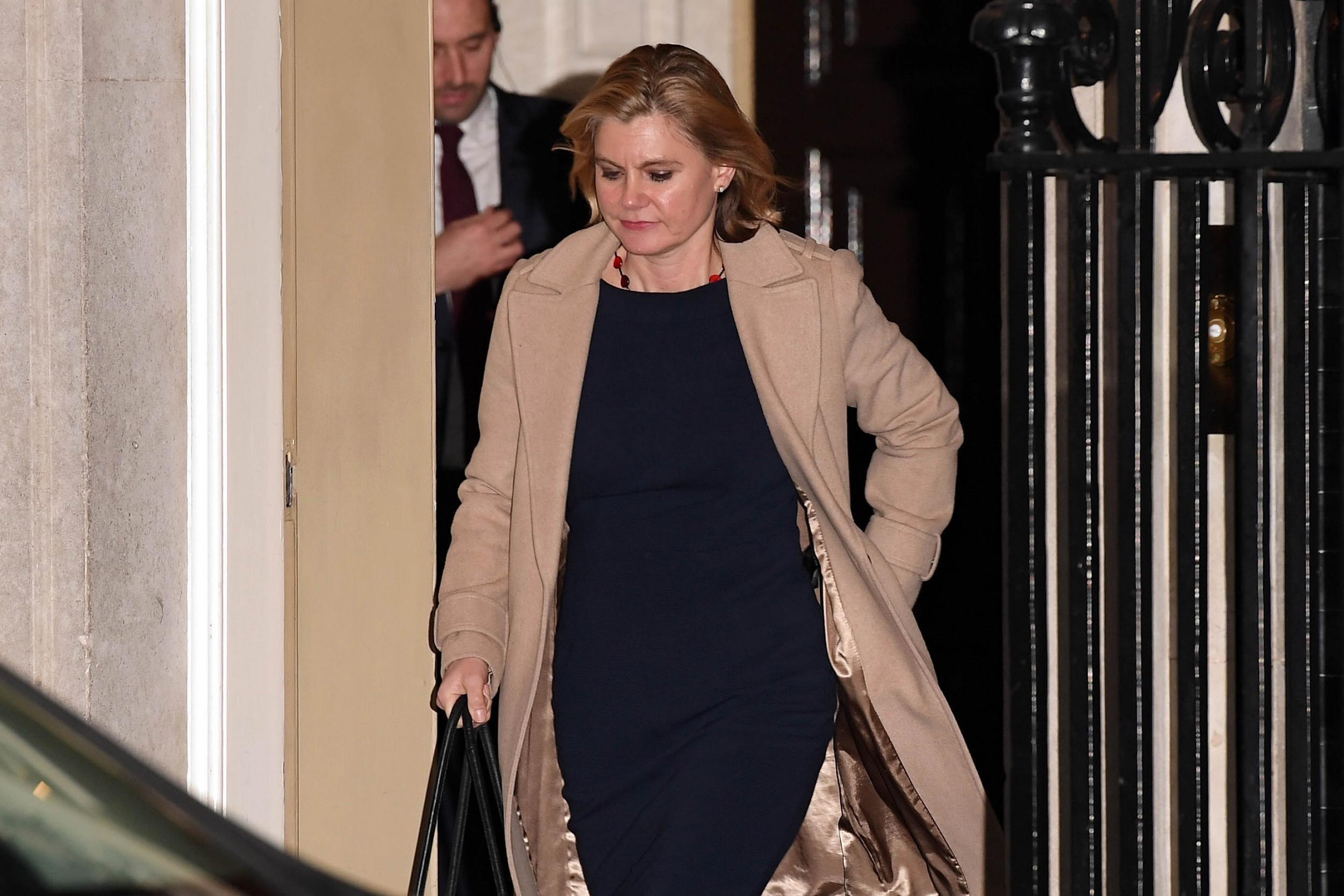Theresa May's reshuffle could have been radical – but instead it pushed her Cabinet further into the past
Just as before, the enhanced departmental changes and big promotions went to men, with Justine Greening notably resigning after May tried to demote her


For Westminster villagers, Cabinet reshuffles are like Christmas and Transfer Deadline Day rolled into one, with the minutiae of every promotion, demotion and gaffe feasted upon. It is true, the wider public won’t care whether or not David Lidington’s move to the Cabinet Office makes him de facto first secretary of state, or about how many minutes Chris Grayling was named party chairman before the mistake was rectified. But what the public will notice are the broad-brush impressions that are left by what should be a set-piece moment for any prime minister.
Which poses the question, what is the big visionary message that Theresa May is hoping to get across to voters – particularly those who deserted her party on election day last June – from what was billed as her widest-ranging reshuffle as Prime Minister?
The briefing in the run-up to the ministerial shake-up was that she wants her Government to appeal to the under-45s, women and ethnic minorities – basically, the people more likely to vote Labour. Shamed by her Government’s record on social mobility, she wants to show she is changing the machinery of government to correct that. Ministers winning promotions would be more representative of voters, we were told.
There are still appointments to be made, including among the lower ranks of government, but so far it is hard to see how this reshuffle changes anything radically. It lacks a great visionary statement about where Ms May sees her party is going at the end of the second decade of the 21st century. Yes, there will now be a greater emphasis on housing, with that important policy area being added at secretary of state level to Sajid Javid’s Communities Secretary role.
It is a welcome sign that Jeremy Hunt is now Health and Social Care Secretary, given the huge challenge of funding care for Britain’s increasing elderly population. But there is a risk that both these posts have merely undergone a rebranding exercise, without the much-needed policy measures to back them up.
If the Prime Minister was serious about social care, after all, she would have done more than just cave in on her plans for a “dementia tax” during the 2017 election – which, while controversial, did seek to redress some fairness in the social care system.
And given the huge pressures of the NHS winter crisis that Mr Hunt is currently dealing with, is there going to be a dedicated minister for social care at minister of state level to back him up? Given those most affected by the problems in the social care system are people on lower incomes, and predominantly women who are low-paid carers, if the Prime Minister is serious about social justice this job must be more than just a change in name.
Then there is the issue of personnel: the four key jobs of home secretary, chancellor, foreign secretary and Brexit secretary remain unchanged. The job of party chairman, held by a former miner, is now occupied by a privately educated barrister, Brandon Lewis – despite his unstuffy, approachable style.
There is progress, in terms of ethnic minority representation, in the form of his new deputy James Cleverly. Both Mr Lewis and Mr Cleverly are liked by party members and are accomplished campaigners – but May’s challenge is to reach beyond Tory grassroots.
In fact, it is on the party side, at Conservative Campaign Headquarters, where the most progress seems to have been made: three out of nine party vice chairmen are from an ethnic minority background, including Kemi Badenoch, a rising star of the 2017 intake.
Yet this was not – despite the billing – a great reshuffle for women. The enhanced departmental changes and big promotions – including David Lidington to the Cabinet Office and effectively the First Secretary of State role – went to men. In a sign of her weakness, Ms May tried to move various ministers, including Mr Hunt and Justine Greening, but found her plans were thwarted. Mr Hunt argued to stay on at health, and Ms Greening was locked in talks in No 10 for hours over a bid by the PM to demote her – she, of course, refused the offer of Department for Work and Pensions, and resigned from the Cabinet.
What’s more, Maria Caulfield, the newly appointed vice chair for women, has a controversial record on women’s rights: she has opposed the decriminalisation of women who end their pregnancies, claiming it would mean a “dangerous liberalisation of abortion”. This is a long way from feminism, and an odd choice by a Prime Minister who wants to pick up more votes from women. And only last week, Ms Caulfield tweeted her support of Toby Young, whose appointment to the board of the Office for Students has caused outrage because of his history of misogynistic tweets.
Given that the Prime Minister’s decision to hold a reshuffle followed the resignations of two cabinet ministers accused of sexual harassment, this shake-up is a missed opportunity to promote more women into high-profile jobs and send a message that her Government represents all voters.

Join our commenting forum
Join thought-provoking conversations, follow other Independent readers and see their replies